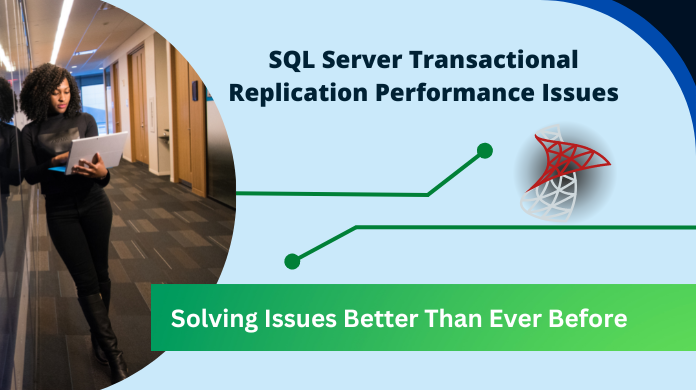Fixing SQL Server Transactional Replication Performance Issues

Synopsis: This article talks about the SQL server transactional replication performance issues in depth for maximizing the performance. Such replication issues in SQL servers slow down the database performance & can result in severe inefficiency. Therefore, this guide explains the adequate solution for users.
Table of Content
Introduction
The SQL Server transaction replication allows you to distribute your transaction details from one server to another server. It’s a good tool that lets the developers to scale your transactions between two or more servers. It works well in a small scale, but, if the transactions are in a huge amount , the performance of SQL Server transaction replication is slow down. Let’s discuss the SQL Server Transactional replication performance issues and its troubleshooting ideas based on the below tips.
Issues with SQL Server Transactional Replication Performance
In SQL Server transaction replication, the performance issues, mainly arise between the publisher and subscriber. The issue that occurs between publisher and subscriber is the latency or delay of the transactions. This may cause the slow performance of transaction replication between two or more servers.
Sometimes, the cause of a slow performance may be a bad Input/output capacity on the subscriber side, blocking on the distribution agent or a high number of virtual log files, that may slow the performance of SQL Server transaction replication. So in such scenario we need to perform some major tasks for its troubleshooting SQL server replication with the aim to improve performance of slow running SQL server database.
Troubleshooting Transactional Replication Performance Issues
- Check delay from publisher to distributor to subscriber by using tracer tokens
- Troubleshoot the data issues by using agent logging to external files.
- If there is blocking issue, then apply the blocked process trace definition.
- Use the Row Filters if the replication setup not able to handle the full dataset.
- Check the number of virtual log files for SQL server replication, they can also be the cause of delay.
- Check DMV stats for waiting resources, which helps, you can find the bottleneck.
- Check msdistribution_history, msrepl_errors & mslogreader_history in distribution database
- Check SQL Server transactional replication performance monitor counters.
- Use the replication at regular intervals instead of using it continuously for SQL server replication troubleshooting.
- To optimize transaction replication in SQL Server, Avoid unnecessary data to publish. This will help to reduce unnecessary network traffic and increase the performance of transaction replication.
- Try to maintain both published and distribution database log on different disk drives.
- Do not set the distribution database to grow automatically, it must be set to a fixed size.
- Manage the replication activities, and try to place them on their own dedicated server, because they can be the cause of the interruption.
- Do not run the snapshot agent repeatedly, because it copies data from publisher to distributor which will impact on its performance and degrade it.
Also Read: How to Fix Index Fragmentation in SQL Server Database
Conclusion
Learning how to fix replication latency in SQL server can be difficult without any guidance. However, this article describes SQL Server transactional replication performance issues smartly. Therefore, we know the major causes that slow down the performance of transaction replication and also their troubleshooting mechanism. I discussed that too many virtual log files can cause delay, because they increase the network traffic and the low disk space may also cause its bad performance.
